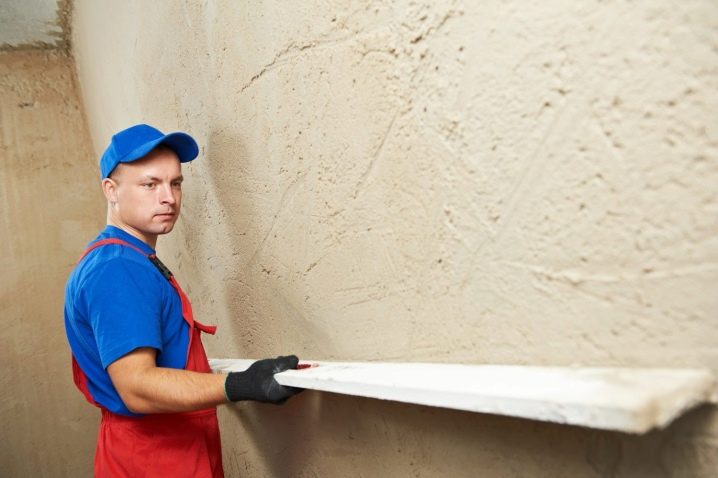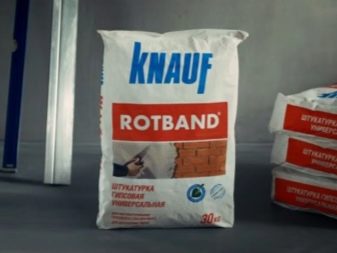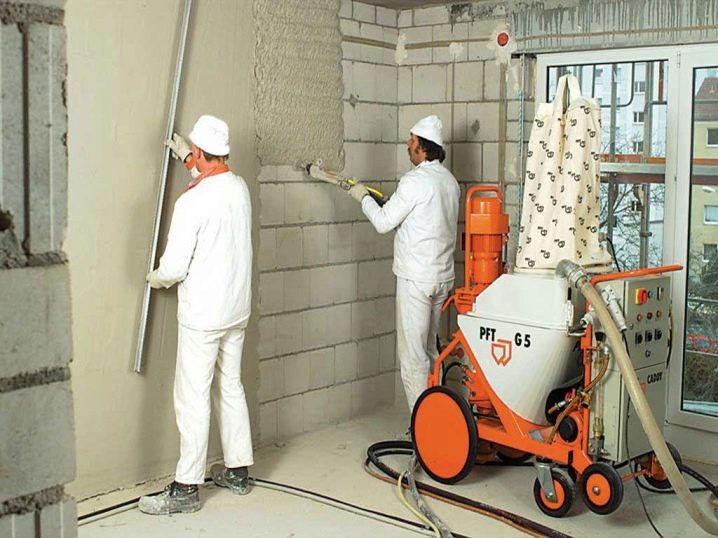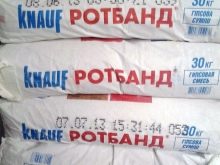Knauf gypsum plaster: characteristics and application
Repair has always been a long and difficult process. The difficulties began already at the preparation stage: sifting sand, separating stones from debris, mixing gypsum and lime. Mixing the finishing solution always took a lot of effort, so already at the first stage of repair often lost all desire to mess with the details and even more so pay attention to the design. Now circumstances have changed significantly: the world's leading construction companies are engaged in preparing the working mixture. Among them - the well-known brand Knauf.
About company
The Germans Karl and Alphonse Knauf in 1932 founded the world famous company Knauf. In 1949, the brothers purchased the Bavarian factory, where they began to produce gypsum mixes for construction.Later, their activity spread to the countries of Western Europe and the USA. In Russia, the company launched its production relatively recently - in 1993.
Now this company owns large-scale enterprises around the world., produces high-quality building mixtures, drywall sheets, heat-saving and energy-intensive insulating building materials. Knauf products enjoy great fame among professional builders and probably everybody who has made repairs in their home at least once is familiar with it.
Types and characteristics of mixtures
In a wide assortment of the brand, several types of gypsum plaster are presented:
Knauf rotband
Perhaps the most popular gypsum plaster from the German manufacturer. The secret of its success in versatility and ease of use - this coating can be applied to different types of walls: stone, concrete, brick. In addition, it is often trimmed even in bathrooms and kitchens, because the mixture withstands high humidity. Used Knauf Rotband only for interior decoration.
The mixture consists of alabaster - a combination of gypsum and calcite. By the way, this so-called gypsum stone has been used in construction since ancient times.
Gypsum mortar became the basis of stone blocks in the Egyptian pyramids.And, therefore, has long established itself as the most durable and sustainable material for repair.
Benefits:
- After repair work the surface does not crack.
- Plaster does not retain moisture and does not create excess moisture.
- There are no toxic substances in the composition, the material is safe and eco-friendly, does not cause allergies.
- Non-flammable, plaster can be used together with heat and sound insulating materials.
If everything is done correctly, in the end you will get a perfect, even coating and no additional processing is required. On the market, this plaster is available in many colors: from classic gray to pink. The hue of the mixture does not affect its quality in any way, but depends only on the mineral composition.
Key features and tips for use:
- Drying time - from 5 days to a week.
- On 1 m2 consumes about 9 pounds of the mixture.
- It is advisable to apply a layer with a thickness of 5 to 30 mm.
Knauf goldband
This plaster is not as versatile as Rotband, because it is intended only for use with rough, uneven walls. It is well applied on the bases from concrete or a brick.In addition, the mixture does not contain components that increase adhesion - the ability of the solution to "adhere" to a solid surface. It is usually used before finishing, as it copes with rather serious defects of the walls. However, do not apply a layer thicker than 50 mm, otherwise the plaster may pull down or crack.
In essence, Goldband is a simplified analog of the classic mix of Rotband, but with less addition of additional components. All the main characteristics (flow and drying time) are completely identical to Rotband. It is recommended to apply Goldband plaster with a layer in 10-50 mm. The color variations of the mixture are the same.
Knauf hp "Start"
Knauf starting plaster was created for the primary processing of walls manually. Most often it is used before the subsequent lining, as it eliminates the irregularities of the walls and ceiling up to 20 mm.
Key features and tips for use:
- Drying time - a week.
- For 1 m2 required 10 kg of the mixture.
- The recommended layer thickness is from 10 to 30 mm.
There is also a separate version of this mixture - MP 75 for applying by machine. This mixture is moisture resistant, smoothes surface irregularities.You can not be afraid that the coating will crack after finishing. Plaster easily falls on any surface, even on wood and drywall.
The German company also produces plaster primers for plaster, which are suitable for mixtures of both manual and machine application.
Application Methods
All plasters primarily differ in application technology. So, some of them are applied manually, others - with the help of special machines.
The machine method is fast and low material consumption. The plaster is usually laid in a layer of 15 mm. The mixture for machine application is loose, and therefore it is extremely inconvenient to apply it with a spatula - the material will simply crack under the tool.
In the same way, plaster for use by hand cannot be applied with a machine. This mixture is very dense and is applied with a considerable layer - up to 50 mm. Due to its properties, manual plaster gets into the subtle mechanisms of the machine and ultimately leads to its breakage.
So these two methods can not replace each other. Therefore, the way in which you will apply the plaster, it is worth considering in advance to purchase the desired option.
As for the products of the German brand, for applying the machine produced plaster under the brand MP75. The remaining grades of Knauf plaster are suitable only for manual application.
Recommendations and useful tips
- No plaster need to be applied in several layers at the same time, imposing them on each other. Adhesion works only with dissimilar materials, and therefore the layers of one mixture very weakly adhere to each other. After drying, the plaster, layered, is likely to pell off.
- So that the plaster dries faster, after the work the room needs to be ventilated.
- Since the Rotband plaster literally tightly adheres to the surface, after finishing the finish, the spatula should be thoroughly cleaned immediately.
- Do not forget: the shelf life of any plaster is 6 months. It is better to keep the bag with the mixture out of the reach of direct sunlight (for example, in the garage or in the attic); the bag should not be full of holes or cracked.
Prices and reviews
Standard packaged mixture in a bag (about 30 kg) can be found in any building materials store in the price range from 400 to 500 rubles. One bag is enough to cover 4 square meters.
Feedback on all Knauf products is mostly positive: users note the high European quality of the material and ease in the process of repair work. The only minus noted by many is that the solution “seizes” for a long time. However, as noted earlier, it is enough to let in some fresh air into the room - and the drying process will accelerate at times.
In the video below, you will see how to level the walls with Knauf Rotband plaster.













































